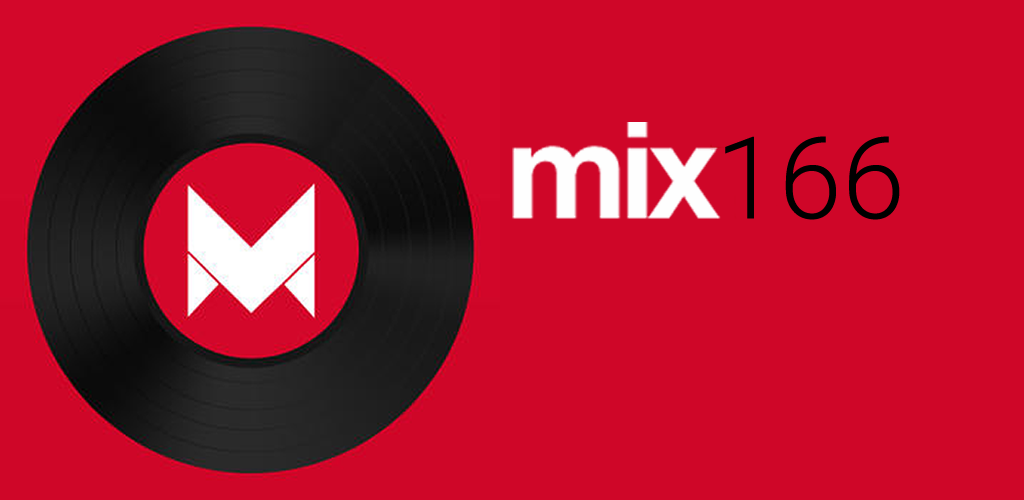Best PS1 Games – PlayStation Titles You Shouldn’t Miss
Mục lục bài viết
Metal Gear Solid (PS1)

Publisher:
Konami /
Developer:
KCEJ
Release Date:
21st Oct 1998 (USA) / 26th Feb 1999 (UK/EU)
While the Metal Gear series didn’t get its start on the PS1, Metal Gear Solid solidified (sorry) the franchise as one of the greatest of all time. It also certified Hideo Kojima as an artistic genius, to the point his name carries with it weight that few other developers can match. And more than any other game on this list, MGS’s intense story of infiltrating a nuclear weapons facility had us glued to our CRT TVs. Many at the time considered it to be the best game ever made and the pinnacle of storytelling; we wouldn’t argue with them. It was one of the first games to present a more mature, serious tone, tackling themes of genetics and nuclear threats, and helped lay the foundation for what was considered a childish pastime to become taken more seriously.
Also, that whole Psycho Mantis memory card thing blew our minds.
Resident Evil 2 (PS1)

Publisher:
Capcom /
Developer:
Capcom
Release Date:
21st Jan 1998 (USA) / 29th Apr 1998 (UK/EU)
In both Japan and the West, the first two Resident Evil games defined the survival horror genre. We give the edge to Resident Evil 2 for a variety of reasons, foremost the usage of pre-rendered backgrounds that added a significant amount of detail to Raccoon City. These backgrounds, along with well-placed camera angles for each screen, gave RE2’s gameplay a cinematic flair not often seen in gaming. Its ‘Zapping System,’ where scenarios completed by either of the two protagonists unlocked an alternate perspective, provided depth to the ludicrous but intriguing story while adding layers of replayability to a genre that wasn’t known for it. All this combined to create a legacy that has spanned generations with Resident Evil games still winning awards and making headlines.
Castlevania: Symphony of the Night (PS1)

Publisher:
Konami /
Developer:
Konami
Release Date:
15th Oct 1997 (USA) / 1st Nov 1997 (UK/EU)
When the gaming industry continued to push for 3D graphics, Castlevania: Symphony of the Night proved that 2D sprites – much like Dracula – wouldn’t stay dead. Assistant Director Koji Igarashi spawned a new genre by incorporating the non-linear design of Metroid titles along with some RPG elements into SotN, giving the waning Castlevania franchise new life with two massive, twisting castles to explore and different styles of play. Unlocking the Inverted Castle ranks as one of the most awesome gaming moments. When a game with smooth sprites, an amazing soundtrack, and tight gameplay gives you a whole secret castle to explore, you don’t forget it.
It’s one of the few games from this era that hasn’t had a sequel improve upon it, whether graphically, musically, or mechanically. For a Metroidvania game, everything about it is perfect.
Vagrant Story (PS1)

Publisher:
Square /
Developer:
Square
Release Date:
15th May 2000 (USA) / 21st Jun 2000 (UK/EU)
Few games were as experimental and overshadowed as (at the time) Square’s Vagrant Story. When standard JRPGs such as Final Fantasy IX and Chrono Cross released that same year, many passed on this action role-playing game with a concise, compelling plot and a battle system with a staggering amount of depth – albeit with quite the learning curve. Chain Abilities during combat played out almost like a rhythm game with the Risk system, Grimoires, and Break Arts adding more strategic layers. Light puzzles also kept the overworld exploration engaging, and its France-inspired locale made for quite the unique setting. Unfortunately, Vagrant Story ended on somewhat of a cliffhanger for protagonist Ashley Riot, leaving many wanting for both a proper sequel and a thorough remaster.
Tekken 3 (PS1)

Publisher:
Bandai Namco /
Developer:
Bandai Namco
Release Date:
29th Apr 1998 (USA) / 12th Sep 1998 (UK/EU)
Somehow, Tekken 3 went ahead and improved upon the success of Tekken 2, cementing the fighting series as its own beast and not a clone of its inspiration, Virtua Fighter. Further importance placed on three-dimensional side-stepping and explosive juggling combos gave Tekken 3 its own identity and ended a lot of friendships in the process. And while most polygon-based games from the PS1 era didn’t age very well, Tekken 3’s backgrounds and character models looked great then and don’t look half bad now. Throw in some strange characters – such as a literal bear and Dr. Bosconovitch – and you’ve got a certified classic. We can’t claim it was the most balanced fighting game, but it was definitely one of the most fun.
Street Fighter Alpha 3 (PS1)

Publisher:
Capcom /
Developer:
Capcom
Release Date:
30th Apr 1999 (USA) / 25th Jun 1999 (UK/EU)
Some fighting game fans would claim Street Fighter Alpha 3 was not only the best PS1 fighting game, but still the best Street Fighter game. Other fans (especially those of Tekken 3) would Shoryuken you for suggesting such blasphemy. Regardless, SFA3 boasted over 30 playable characters and an incredibly flexible ‘ism’ system. A-ism, X-ism, and V-ism drew from previous games and altered how each character played, including the moves available and whether they could, for example, air block. Other ‘ism’ changes included damage dished out and what kinds of Super Combos were performable, so combined with a handful of hidden game modes, this all made SFA3 one of the most customisable fighting games ever made.
Tony Hawk’s Pro Skater 2 (PS1)

Publisher:
Activision /
Developer:
Neversoft
Release Date:
20th Sep 2000 (USA) / 29th Sep 2000 (UK/EU)
You’d be forgiven for not knowing Tony Hawk’s Pro Skater 2 is the most critically acclaimed PS1 game, yet it holds that accolade for very good reasons. Foremost, it capitalised on the booming skater culture in the late 1990s and early 2000s – the vast majority of kids aged 8 to 18 had some interest in skateboarding at that time. There was a good chance they had a PS1, too. But it wouldn’t have done so well if it wasn’t an overall great game, and much like Tony Hawk landing the 900 at the World X Games in 1999, it delivered. Perfect controls, open maps that allowed you to tackle objectives in any order, an amazing, taste-defining soundtrack (‘You’ and ‘Bring the Noise’ – yes please), and Spider-Man as an unlockable character – what more could you ever want in a game?
Tomb Raider (PS1)

Publisher:
Eidos /
Developer:
Core Design
Release Date:
14th Nov 1996 (USA) / 22nd Nov 1996 (UK/EU)
Early in the PS1’s long lifespan, perhaps the most impressive game was Lara Croft’s first adventure. Tomb Raider may have not aged particularly well visually or mechanically, but it truly made you feel as if you were on an adventure through exotic locales, digging up treasure and avoiding deadly traps, like no other game that came before it. Dense, puzzle-like levels with massive Egyptian statues, charging T-Rexes, and the unnerving, fleshy walls and zombies of Atlantis have stayed with us all these years, even if it’s a difficult task to go back and replay it. Lara Croft would go on to become a gaming icon that persists to this day, and the franchise as a whole would go on to inspire some of our favourite adventure games.
Spider-Man (PS1)

Publisher:
Activision /
Developer:
Neversoft
Release Date:
1st Sep 2000 (USA) / 15th Sep 2000 (UK/EU)
The Spider-Man video game on PS1 was amazing. While not a cinematic and technological masterpiece like its PS4/PS5 counterpart, developer Neversoft managed to pack the PS1 version full of campy, comic-book humour, made all the more spectacular by the inclusion of voice actors and actresses from the cartoons of that era. Everything you could want to make an authentic Spidey game was there. Web slinging, wall climbing, one-liners, and a handful of Spider-Man’s best villains to web up, including Venom and Carnage. Cameos from other heroes, such as Daredevil and Captain America, made this game a Marvel fan’s dream. If we knew then what Insomniac’s 2018 spiritual reboot would be like, our Spidey senses would’ve tingled, hard.
Legacy of Kain: Soul Reaver (PS1)

Publisher:
SCEA /
Developer:
Crystal Dynamics
Release Date:
16th Aug 1999 (USA) / 1999 (UK/EU)
On our personal list of “Franchises We Really Want Brought Back”, Legacy of Kain: Soul Reaver sits near the top. Few games of the PS1 era delved into the philosophical themes that the Legacy of Kain games did, and of those games, Soul Reaver was the pinnacle. Puzzles utilising both the physical world and spectral realm, between which protagonist Raziel shifted between, made for some exceedingly difficult and ingenious puzzles. The world of Nosgoth provided a unique backdrop for Raziel’s quest to overthrow Kain, and the sound design and voice acting for the time was well above standard. Unfortunately, Soul Reaver received three sequels that didn’t quite live up to its legacy. We think it’s about time it received another.
Oddworld: Abe’s Oddysee (PS1)

Publisher:
Sony Computer Entertainment /
Developer:
Oddworld Inhabitants
Release Date:
19th Sep 1997 (USA) / 19th Sep 1997 (UK/EU)
Available On:
PS+ Premium
We won’t lie to you – more than the horror games on this list, Oddworld: Abe’s Oddysee creeped us out. Abe the Mudokon’s quest to save his race from being harvested for meat, combined with its grimey aesthetic, made for an unnerving experience. That isn’t to say the first Oddworld game was bad, however. Quite the opposite was true. The game captured imaginations with how Abe interacted with various creatures to solve puzzles when not leaping from platform to platform; indeed, we think it innovated the 2D platformer by meshing puzzles so thoroughly into the gameplay. Mind controlling Sligs and transforming into the powerful Shrykull to wipe entire screens of enemies was just icing on the grimey cake.
Gran Turismo (PS1)

Publisher:
Sony Computer Entertainment /
Developer:
Polyphony Digital
Release Date:
12th May 1998 (USA) / 8th May 1998 (UK/EU)
Back in 1997, it was hard to imagine a more realistic-looking racing game than Gran Turismo. Up until that point, racing simulators never got much of a spotlight with how popular more arcade-style games were, yet with the first GT even those without a penchant for cars found a lot to like with its responsive controls and mind-blowing graphics. As a result, it became one of the highest-rated and commercially successful PS1 games. The Simulation Mode, where you had to earn driver’s licences to unlock events and championships, added dozens of hours of satisfying gameplay. Throw in 140 cars to unlock, and if Gran Turismo was the only game you had for PS1, you were set. The sequel is equally amazing, but the first game had the most impact, in our opinion.
Wipeout XL (PS1)

Publisher:
Psygnosis /
Developer:
Psygnosis
Release Date:
30th Sep 1996 (USA) / 1st Oct 1996 (UK/EU)
What ever happened to futuristic racers? They were awesome and need to make a comeback, sooner rather than later. We digress – on the PS1, no futuristic racer did speed, sci-fi aesthetic, and electronic beats better than WipeOut 2097 (WipeOut XL in North America). The Chemical Brothers and The Prodigy headlined 2097’s OST, matching the adrenaline-inducing gameplay perfectly. 2097 also introduced the ability to destroy other racers with some awesome weapons like the Thunder Bomb and Quake Disruptor, a mechanic that would continue in all future WipeOut games. Few games got our blood pumping faster.
Spyro: Year of the Dragon (PS1)

Publisher:
Sony Computer Entertainment /
Developer:
Insomniac Games
Release Date:
25th Oct 2000 (USA)
Much like its platforming cousin Crash Bandicoot, the third entry to the Spyro series on the PS1 ranks highest, primarily because it was the first game to mix up the gameplay with multiple other characters. It didn’t reinvent the Dragon Egg otherwise, but it cleaned it up with tighter controls, better graphics, and a wealth to explore and unlock. With open-ended levels and no time constraints, Year of the Dragon successfully captured that ‘collectathon’ feel, driving us to search every nook of the worlds within Sunrise Spring, Midday Gardens, Evening Lake, and Midnight Mountain as our favourite purple dragon.
Final Fantasy Tactics (PS1)

Publisher:
Squaresoft /
Developer:
Squaresoft
Release Date:
28th Jan 1998 (USA)
From the same team that created the sublime Tactics Ogre, Final Fantasy Tactics has to rank as one of the finest strategy RPGs of all time. While it uses the Final Fantasy branding to good effect, this really is its own self-contained thing; the storyline is astonishingly deep and deals with surprisingly mature themes (sadly, the same cannot be said of the GBA sequel), while the gameplay is engaging, addictive and positively drowning in scope and nuance. A PSP remake arrived later and is just as essential; this is truly one of the best games of all time, and effortlessly one of the PS1’s finest moments.
Einhänder (PS1)

Publisher:
Square /
Developer:
Square
Release Date:
5th May 1998 (USA)
Square is of course famous for its RPGs, but this fine 2.5D shooter from the ’90s proves that the company is capable of turning its hand to other genres, and with great success to boot. Outside of Einhänder’s sci-fi setting, amazing FMV cutscenes and an excellent soundtrack, the hook is that your craft can grab weapons from fallen enemies and use those to turn the tide. Some fantastic level designs and memorable bosses make this a real gem of the genre; one has to wonder why Square hasn’t attempted to create a sequel after all these years.
Time Crisis (PS1)

Publisher:
Namco /
Developer:
Namco
Release Date:
31st Oct 1997 (USA) / 30th Nov 1997 (UK/EU)
Lightgun games certainly weren’t a new invention by the time Namco released this title in arcades, but Time Crisis certainly shook the genre up a little. The addition of a pedal for reloading and taking cover made it a unique experience when compared to the likes of Operation Wolf and Virtua Cop, and the resultant PS1 port had its own technical trick up its sleeve: the Gun-Con lightgun accessory, which connected via the PS1’s AV port for additional accuracy. You could even use a controller on the floor as a makeshift pedal for increased faithfulness to the arcade original.
Ridge Racer Type 4 (PS1)

Publisher:
Namco /
Developer:
Namco
Release Date:
1st May 1999 (USA) / 16th Apr 1999 (UK/EU)
The arrival of Gran Turismo on the PS1 changed the landscape of console racing games forever and made arcade titles like Ridge Racer seem a little old-fashioned. Even so, Namco released its fourth PlayStation Ridge Racer title soon afterwards, giving the game a visual upgrade which ensured it could at least compete in terms of graphics. The game’s deep and involving single-player campaign won it many fans, and it struck the perfect balance between accessible racing and rewarding challenge. Ridge Racer Type 4 might not have offered the realism of Gran Turismo, but it’s arguably more fun if you’re just looking for quick thrills.
International Superstar Soccer Pro 98 (PS1)

Publisher:
Konami /
Developer:
Konami
Release Date:
2nd May 1997 (USA) / Jun 1997 (UK/EU)
The PS1, like all popular consoles, was blessed with many FIFA titles, but Konami’s International Superstar Soccer Pro series was unquestionably the best the format had to offer when it came to football. Based on the Winning Eleven series in Japan, ISS Pro 98 is remarkable even by modern standards; the degree of control is stunning, and it’s possible to engineer some truly sublime pieces of footy in this game. Add in a second player and you’ve got one of the finest representations of the sport from this period in time; outside of the excellent N64 version (which shared the same name but in reality was a different game), little else came close.











